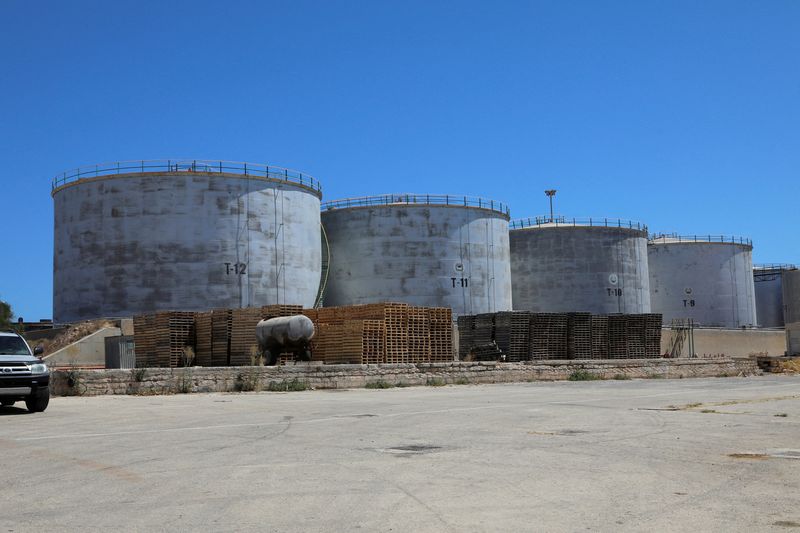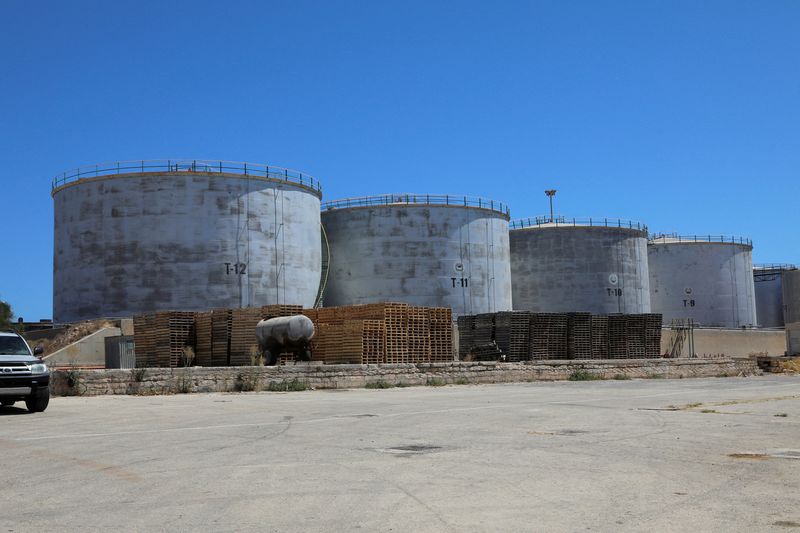
By Paul Carsten
LONDON (Reuters) -Oil prices fell slightly on Wednesday, hovering at their lowest levels since December after plunging more than 4% the previous day on signs of a weak global economy, lacklustre oil demand, and expectations of an end to a dispute halting Libyan exports.
The oil price decline came during a broader sell-off in world markets, with shares falling and expectations of fading global growth hitting riskier assets.
That poses a challenge for OPEC+, which Reuters reported last week was still set to proceed with a planned oil output hike from October. Any further increase in supply could push prices even lower.
Brent crude futures fell 17 cents, or 0.2%, to $73.58 by 0916 GMT, after the previous session’s fall of 4.9%. U.S. West Texas Intermediate crude futures were down 20 cents, or 0.3%, at $70.14, after dropping 4.4% on Tuesday.
Both benchmarks had fallen by $1 in earlier trading on Wednesday, “amid expectations of a potential deal to resolve the dispute in Libya,” said Toshitaka Tazawa, an analyst at Fujitomi Securities Co Ltd, referring to a clash between rival factions over control of oil revenue that had cut the North African’s crude output by half and curbed exports.
Libya’s two legislative bodies agreed on Tuesday to jointly appoint a central bank governor within 30 days, potentially defusing the battle. The central bank is the sole legal repository for oil revenue and pays state salaries across Libya.
Oil exports at major Libyan ports were halted on Monday and production cut nationwide. Libya’s National Oil Corp (NOC) declared force majeure on its El Feel oilfield from Sept. 2.
“The market remained under pressure also because of concerns over sluggish fuel demand following weak economic indicators from China and the United States,” Tazawa said.
Recent data from China, the world’s biggest crude importer, showed manufacturing activity sank to a six-month low in August, when growth in new home prices slowed.
Meanwhile in the U.S., Institute for Supply Management data on Tuesday showed manufacturing remained subdued.

Weekly U.S. inventory data has been delayed by Monday’s Labor Day holiday. The report from the American Petroleum Institute is due at 4:30 p.m. EDT (2030 GMT) on Wednesday and data from the Energy Information Administration will be published at 11:00 a.m. EDT (1500 GMT) on Thursday.
U.S. crude oil and gasoline stockpiles were expected to have fallen last week, a preliminary Reuters poll showed. [EIA/S][API/S]
This post is originally published on INVESTING.




